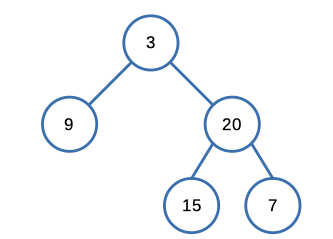LeetCode: 106. Construct Binary Tree from Inorder and Postorder Traversal
The Problem
Given two integer arrays inorder and postorder where inorder is the inorder traversal of a binary tree and postorder is the postorder traversal of the same tree, construct and return the binary tree.
Example

Input: inorder = [9,3,15,20,7], postorder = [9,15,7,20,3]
Output: [3,9,20,null,null,15,7]Constraints:
1 <= inorder.length <= 3000postorder.length == inorder.length-3000 <= inorder[i], postorder[i] <= 3000inorderandpostorderconsist of unique values.- Each value of
postorderalso appears ininorder. inorderis guaranteed to be the inorder traversal of the tree.postorderis guaranteed to be the postorder traversal of the tree.
Solution
We opted for a recursive approach to tackle this problem, and upon evaluating our solution on the LeetCode platform, we achieved the following outcome:

Here's the code that led us to this result.
TreeNode* buildTree(vector<int>& inorder, vector<int>& postorder) {
unordered_map<int, int> inorderIndexMap;
for (int i = 0; i < inorder.size(); ++i)
inorderIndexMap[inorder[i]] = i;
int postorderIndex = inorder.size() - 1;
return buildTreeHelper(
postorder, inorder,
postorderIndex,
0, inorder.size() - 1,
inorderIndexMap
);
}
TreeNode* buildTreeHelper(
vector<int>& postorder, vector<int>& inorder,
int& postorderIndex,
int left, int right,
unordered_map<int, int>& inorderIndexMap
) {
if (left > right) return nullptr;
int rootValue = postorder[postorderIndex];
TreeNode* root = new TreeNode(rootValue);
int inorderIndex = inorderIndexMap[rootValue];
--postorderIndex;
root->right = buildTreeHelper(
postorder, inorder,
postorderIndex,
inorderIndex + 1, right,
inorderIndexMap
);
root->left = buildTreeHelper(
postorder, inorder,
postorderIndex,
left, inorderIndex - 1,
inorderIndexMap
);
return root;
}🧠
Github with all the solution including test cases.
Let's break down this code step by step.
First, let's define a few key concepts:
- Inorder Traversal: The inorder traversal of a binary tree visits the nodes in the order "left, root, right." That is, it starts from the leftmost node, then goes to the root, and then to the right subtree.
- Postorder Traversal: The postorder traversal of a binary tree visits the nodes in the order "left, right, root." It starts from the leftmost node, then goes to the rightmost node, and finally visits the root.
Now, let's go through the code:
buildTreeFunction: This is the main function that constructs the binary tree. It takes two input vectors,inorderandpostorder, representing the inorder and postorder traversals of the tree.inorderIndexMap: Anunordered_mapis used to store the indices of values in theinordervector. This map is created for efficient lookup of values during tree construction.postorderIndex: This variable is initialized to the last index in thepostordervector. It keeps track of the current position in thepostordertraversal.- Finally, the
buildTreeHelperfunction is called with thepostorder,inorder,postorderIndex, left index (0initially), and right index (inorder.size() - 1initially), along with theinorderIndexMap.
Now, let's look at the buildTreeHelper recursive function:
buildTreeHelperRecursive Function: This function is responsible for constructing a subtree of the binary tree.- Base Case: The function starts with a base case that checks if the
leftindex exceeds therightindex. If so, it returnsnullptrto indicate an empty subtree. - Root Value: It retrieves the value of the root node from the
postordertraversal. Since thepostordertraversal processes nodes in the order "left, right, root," the root value is the last element at the currentpostorderIndex. - Creating the Root Node: A new
TreeNodeis created with the root value. - Finding Inorder Position: It finds the position of the root value in the
inordertraversal using theinorderIndexMap. This allows us to determine the left and right subtrees in the inorder traversal. - Postorder Index Decrement: The
postorderIndexis decremented to move to the previous value in thepostordertraversal. - Recursive Calls: The function then recursively constructs the right subtree (postorder traversal) and the left subtree (postorder traversal) by adjusting the
inorderindices accordingly. - Returning the Root: Finally, the function returns the root of the current subtree.
